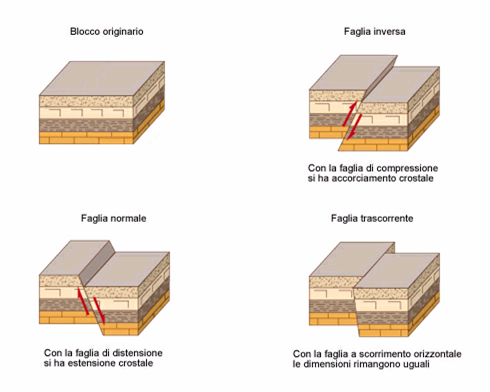The fault is a fracture within a volume of rock in the Earth’s crust, where the two blocks that are separated show evidence of relative movement. The block above the fault surface is called the hanging wall, while the block below is called the footwall.
If the hanging wall moves down the fault surface, we have a normal fault, which causes a general loosening of the rock volume.
If the hanging wall moves up the footwall, we have a reverse fault, which will cause a general shortening of the rock volume.
If, on the other hand, the fault surface is vertical, and the two blocks slide next to each other, we have a strike-slip fault.